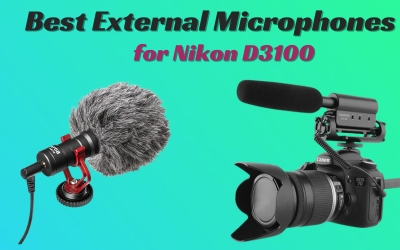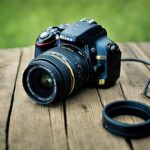Are vintage condenser microphones better? Dive into the electrifying world of audio nostalgia as we unravel the mystery behind these timeless classics. Strap in for a sonic journey that’ll have you singing the praises of yesteryear’s tech!
Key Takeaways
- Vintage condenser microphones have a rich history and unique sound characteristics.
- Modern condenser microphones offer many advantages over their vintage counterparts, including improved durability and reliability.
- When considering whether to use a vintage condenser microphone, it is important to weigh the benefits and drawbacks and determine whether it is the right choice for your recording needs.
Table of Contents
ToggleHistorical Significance of Vintage Condenser Microphones
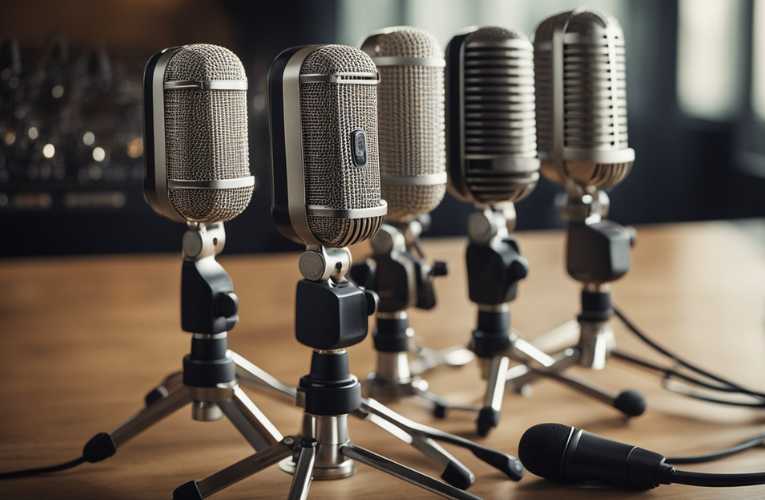
Vintage condenser microphones have a rich history that spans over a century. They were first developed in the early 1910s and have since evolved into the modern microphones we know today. In this section, we will explore the historical significance of vintage condenser microphones, including pioneering brands and models and the evolution of microphone technology.
Pioneering Brands and Models
Some of the most significant brands in the history of condenser microphones include Neumann, AKG, and Telefunken. These brands produced some of the most iconic and sought-after vintage microphones, such as the Neumann U47, AKG C12, and Telefunken ELA M 251. These microphones are still highly regarded for their unique sound and are often used in professional recording studios.
Evolution of Microphone Technology
The development of condenser microphones revolutionized the recording industry. Before the invention of condenser microphones, ribbon microphones were the primary type of microphone used in studios. However, ribbon microphones were not as sensitive as condenser microphones and had a limited frequency response.
The first condenser microphones used a thin metal diaphragm that was coated with a conductive material. The diaphragm was placed close to a metal backplate, creating a capacitor. When sound waves hit the diaphragm, it vibrated, causing the distance between the diaphragm and backplate to change, resulting in a change in capacitance. This change in capacitance was then converted into an electrical signal.
Over the years, condenser microphone technology has continued to evolve, resulting in improved sensitivity, lower noise levels, and a wider frequency response. Today, modern condenser microphones are used in a wide range of applications, from recording studios to live performances.
Technical Comparison: Vintage vs. Modern Condenser Microphones
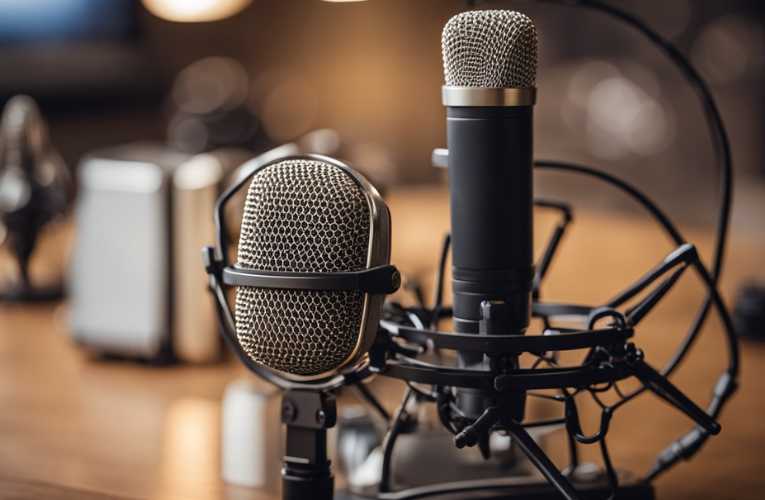
When it comes to choosing between vintage and modern condenser microphones, there are several technical factors to consider. In this section, we will discuss three key areas of comparison: sound characteristics, build quality and durability, and circuitry and components.
Sound Characteristics
Vintage condenser microphones are often praised for their warm and natural sound. These microphones typically use large diaphragms and vacuum tubes, which can produce a more natural and pleasing sound than modern solid-state microphones. However, vintage microphones can also have a higher noise floor and may not be as accurate as modern microphones.
Modern condenser microphones, on the other hand, often have a flatter frequency response and lower noise floor than vintage microphones. This can make them ideal for recording detailed and accurate sound, such as in a studio setting. However, some people find modern microphones to be too sterile or harsh sounding compared to vintage microphones.
Build Quality and Durability
Vintage microphones are often praised for their build quality and durability. Many vintage microphones were built to last and can still be found in excellent condition today. However, some vintage microphones may require maintenance or repair due to their age.
Modern microphones are often built with more advanced materials and manufacturing techniques, which can make them more durable and reliable than vintage microphones. However, this can also make them more expensive than vintage microphones.
Circuitry and Components
Vintage microphones often use vacuum tubes and other components that can be difficult to find and expensive to replace. However, some people believe that these components add to the unique sound of vintage microphones.
Modern microphones often use more advanced circuitry and components, which can make them more reliable and easier to maintain than vintage microphones. However, some people believe that this can also make modern microphones sound too clinical or sterile.
Related Posts:
Are Vintage Condenser Microphones Better in Modern Recording
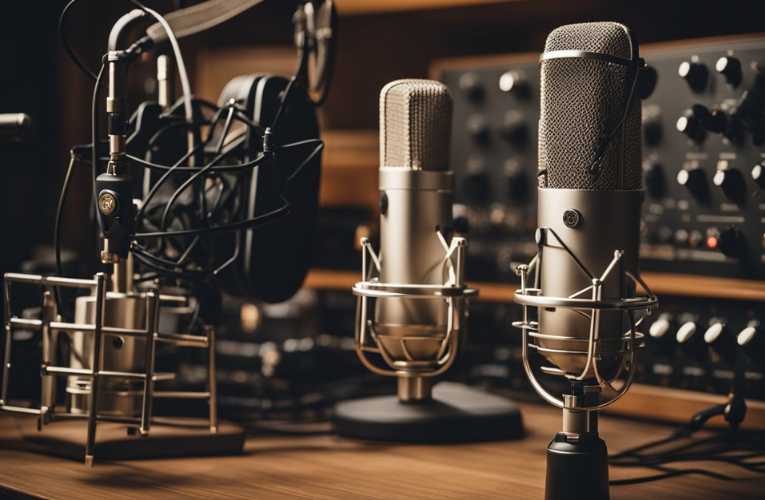
When it comes to recording equipment, vintage condenser microphones have gained a reputation for being the best in the business. But are they really better than modern microphones? Let’s take a closer look.
Professional Studios
In professional recording studios, vintage condenser microphones are still highly sought after. Many engineers prefer the warmth and character that these microphones can bring to a recording. However, it’s important to note that vintage microphones can be expensive and require extra care and maintenance to keep them in good working condition.
Music Production
In modern music production, there are many high-quality condenser microphones available that can produce excellent results. While vintage microphones may have a unique sound, modern microphones can offer a wider range of features and capabilities. For example, many modern microphones have switchable polar patterns, allowing you to adjust the microphone’s sensitivity to different sound sources.
Nostalgia and Aesthetics
Finally, it’s worth mentioning that vintage microphones can have a certain nostalgia and aesthetic appeal. They are often seen as a symbol of the golden age of recording, and many musicians and producers enjoy using them for this reason alone. However, it’s important to remember that the sound quality of a microphone should always be the top priority when making a recording.
In conclusion, while vintage condenser microphones can offer a unique sound and character, they may not necessarily be better than modern microphones in all situations. When choosing a microphone for your recording needs, it’s important to consider your budget, the features you require, and the overall sound you are trying to achieve.
Considerations for Acquiring and Using Vintage Condenser Microphones
When it comes to recording music, the microphone you choose can make a big difference in the sound quality of your recordings. Vintage condenser microphones have been used for decades by recording professionals to capture warm, detailed sound. However, there are several factors to consider before investing in a vintage condenser microphone.
Availability and Scarcity
One of the main considerations when acquiring a vintage condenser microphone is availability. Vintage microphones are often rare and hard to find, especially if you are looking for a specific model. Some vintage microphones are also highly sought after by collectors and can be quite expensive.
Maintenance and Repairs
Another important consideration is maintenance and repairs. Vintage microphones require regular maintenance to keep them in good working order. This can include cleaning the capsule, replacing the diaphragm, and repairing any damage to the body or wiring. It is important to find a qualified technician who can perform these repairs, as vintage microphones require specialized knowledge and tools.
Investment Value
Finally, it is important to consider the investment value of a vintage condenser microphone. While some vintage microphones can be quite expensive to acquire, they can also hold their value well over time. This makes them a good investment for recording professionals who are looking to build a collection of high-quality microphones.
In summary, vintage condenser microphones can be an excellent choice for recording professionals who are looking to capture warm, detailed sound. However, it is important to consider the availability, maintenance, and investment value of these microphones before making a purchase.
Conclusion
Vintage condenser microphones can offer a unique and desirable sound for certain recording applications. However, they may not always be the best choice for every situation. Consider the following factors before making a decision:
- Budget: Vintage microphones can be expensive and may require maintenance.
- Availability: Vintage microphones may be difficult to find and may have limited availability.
- Sound: Vintage microphones can offer a warm and rich sound, but may not always be suitable for modern recording techniques.
- Durability: Vintage microphones may be more fragile and require careful handling.
Ultimately, the decision to use a vintage condenser microphone should be based on your specific recording needs and preferences. Take the time to research and test different microphones to find the one that works best for you.
Related Posts:
Frequently Asked Questions
What are the sonic differences between vintage and modern condenser microphones?
Vintage condenser microphones are known for having a warmer, fuller, and more natural sound than modern ones. They also tend to have a more extended high-frequency response, which can make them ideal for recording vocals, acoustic guitars, and other instruments that require a detailed and nuanced sound. Modern condenser microphones, on the other hand, are generally more accurate and transparent, which can be beneficial for recording genres that require a more precise and clinical sound, such as pop, electronic, and hip-hop.
How do vintage condenser microphones perform compared to modern ones for vocal recording?
Vintage condenser microphones are often preferred for vocal recording because of their warm and natural sound. They can add character and depth to a vocal performance, making it sound more intimate and emotional. However, modern condenser microphones can also perform exceptionally well for vocal recording, especially if you’re looking for a more accurate and transparent sound.
What should be considered when choosing a vintage condenser microphone for a studio setup?
When choosing a vintage condenser microphone for a studio setup, there are several factors to consider. First, you need to determine what type of sound you’re looking for. Vintage condenser microphones can vary significantly in terms of their sound characteristics, so it’s essential to choose one that matches your preferences and needs. You should also consider the microphone’s age, condition, and rarity, as these factors can affect its value and performance. Additionally, you should make sure that the microphone is compatible with your recording equipment and that you have the necessary cables and accessories to use it properly.
Are there any notable disadvantages to using vintage condenser microphones for recording?
While vintage condenser microphones can offer a unique and desirable sound, they also come with some notable disadvantages. For example, they can be more fragile and prone to damage than modern microphones, which can make them more challenging to maintain and repair. Additionally, vintage microphones can be expensive and difficult to find, especially if you’re looking for a particular model or brand. Finally, older microphones may not have the same features and specifications as modern ones, which can limit their versatility and usefulness in certain recording situations.
How does the build quality of vintage condenser microphones compare to that of newer models?
Vintage condenser microphones are often praised for their exceptional build quality and craftsmanship. Many vintage microphones were hand-built and assembled using high-quality materials, which can contribute to their unique sound and durability. However, modern microphones are also built to a high standard and can offer superior reliability and performance in some cases.
What factors contribute to the unique sound characteristics of vintage condenser microphones?
Several factors can contribute to the unique sound characteristics of vintage condenser microphones. For example, the type of capsule used in the microphone can affect its frequency response, sensitivity, and distortion characteristics. The design of the microphone’s body and grille can also impact its sound, as can the materials used in its construction. Finally, the age and condition of the microphone can affect its sound, as older microphones may have undergone changes in their components or wiring over time.

